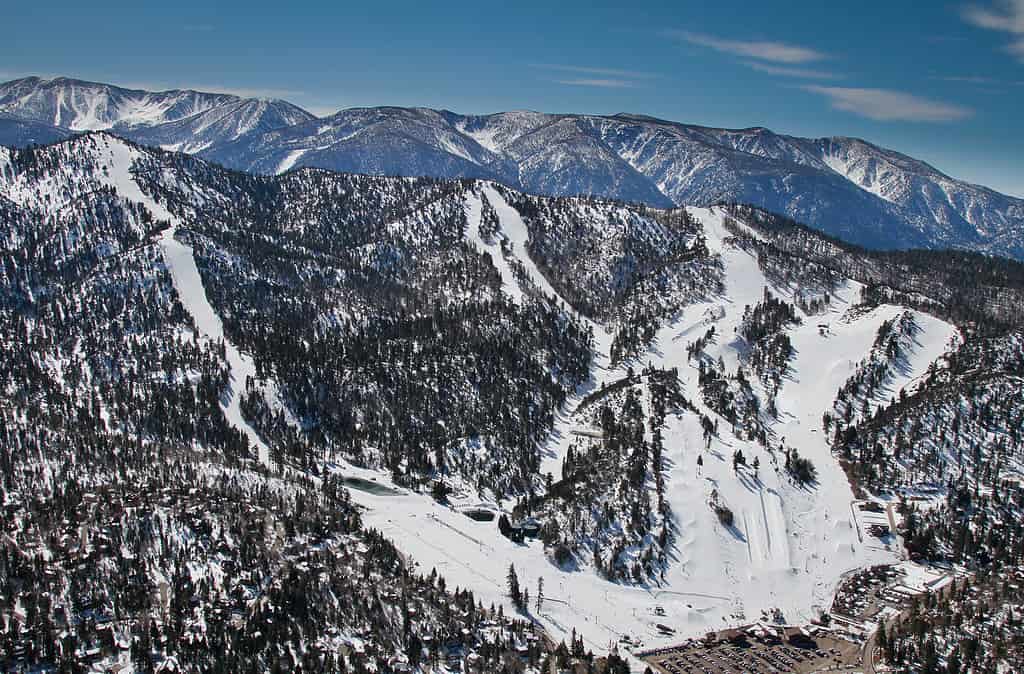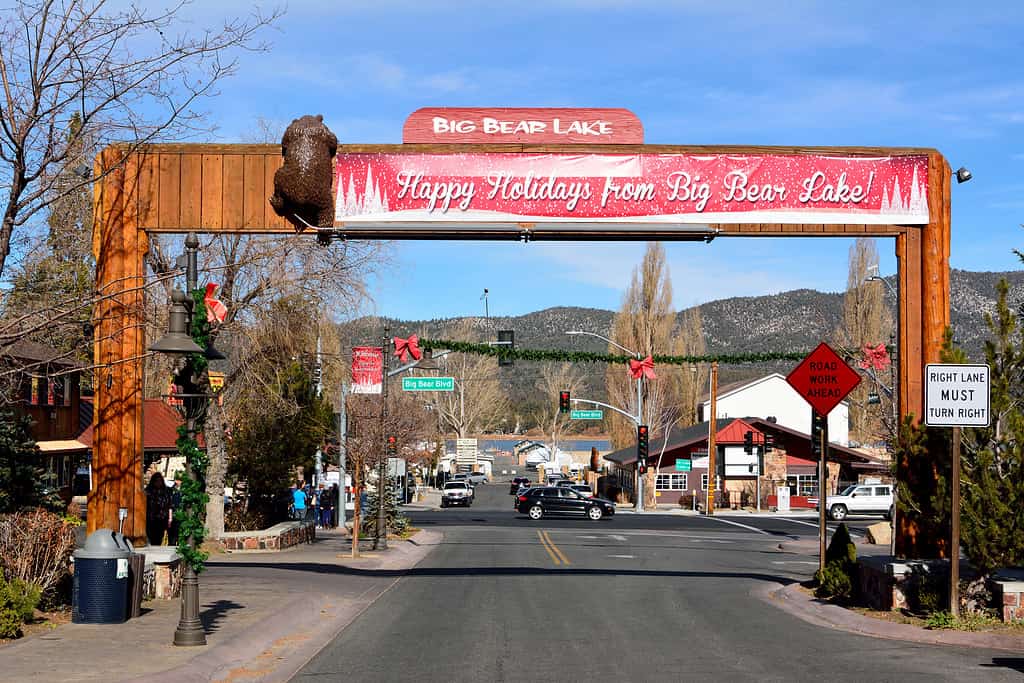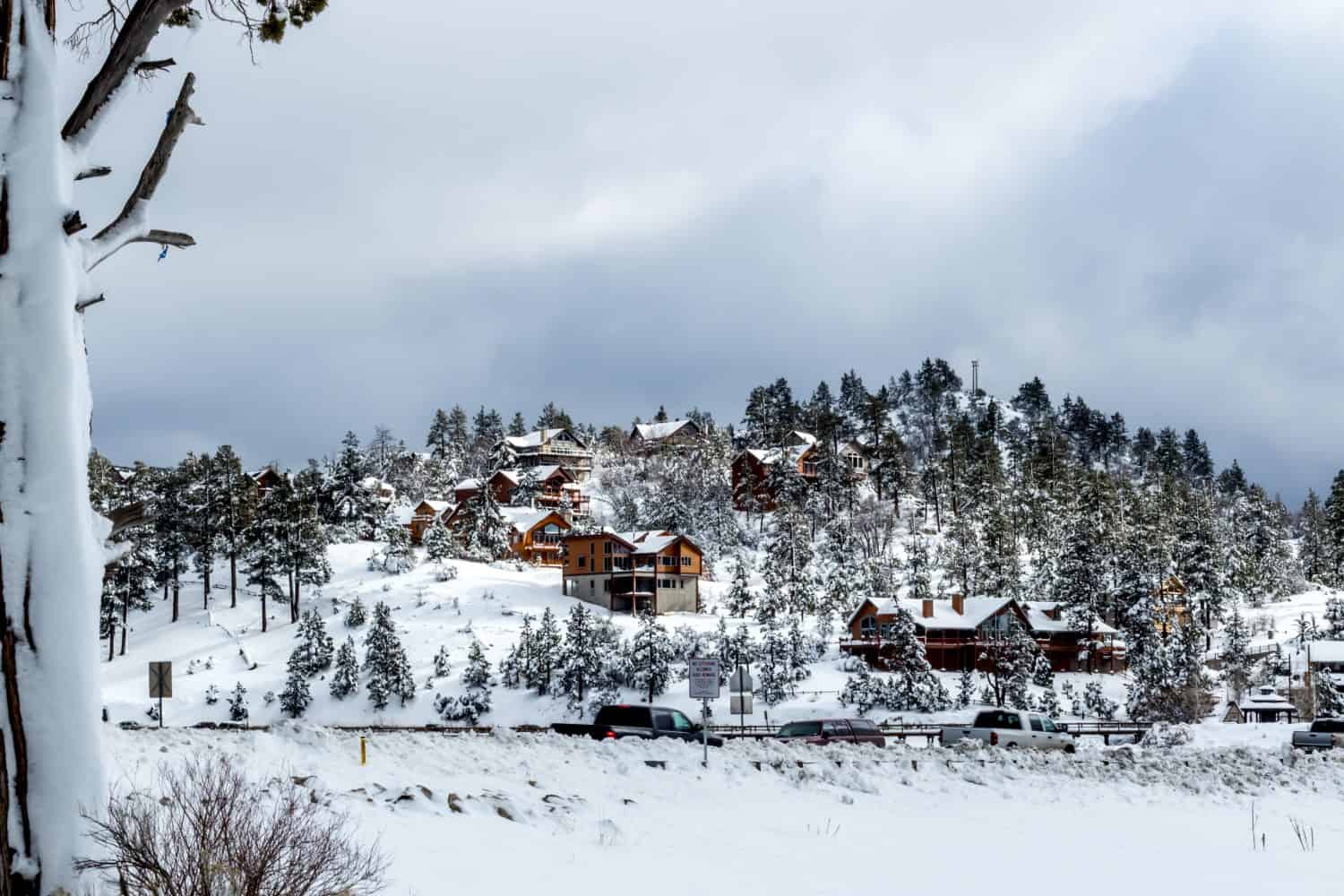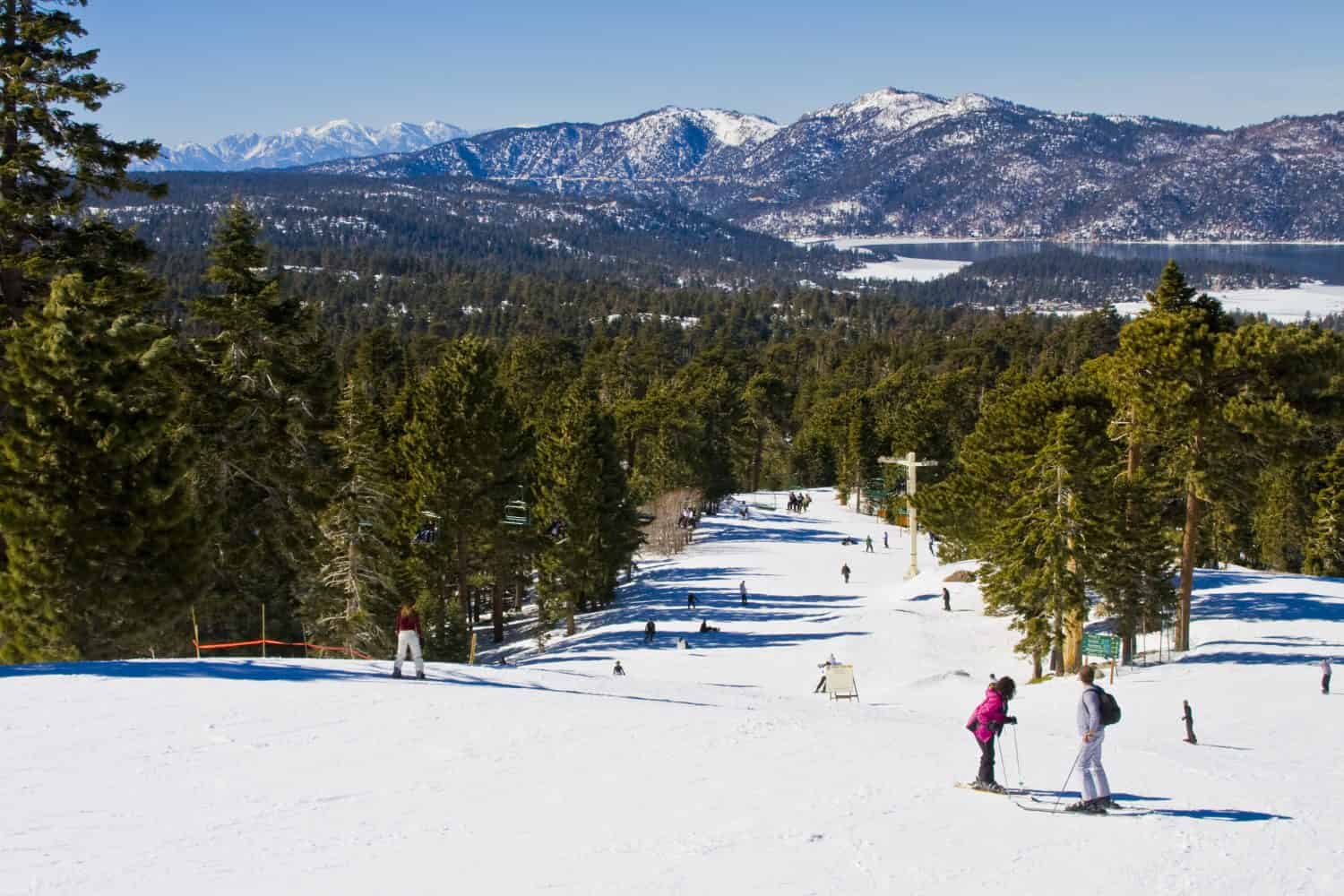
Big Bear Mountain has over 400 acres of terrain for skiers and snowboarders to embark on.
©http://www.bearmountain.com/snowboard/mountain-info/mountain-facts/CC BY-SA 3.0 – Original / License
Big Bear Lake is located in the San Bernardino Mountains of Southern California. It’s known as a four-season resort area, offering its visitors the best parts of San Bernardino National Forest year-round. You might be wondering: does Big Bear get any snow? Yes, it snows in Big Bear, California! And if you’re an avid skier, snowboarder, or a lover of all things wintery, you might be curious to know the snowiest times to visit Big Bear Lake. If you’re eager to escape to the San Bernardino Mountains for a winter wonderland, learn about peak timing and the average amounts of snowfall in Big Bear.
Visiting Big Bear Lake

December tends to be the snowiest month in Big Bear, on average.
©iStock.com/AlizadaStudios
As mentioned above, Big Bear has four distinct seasons, making it a lovely place to visit and experience during fall, winter, spring, and summer. No matter the season, Big Bear Lake always has something to offer the thousands of visitors who flock to the area. During the summer months, temperatures reach the 80s (F), and the winter months often see temperatures in the low 40s (F).
Big Bear is located in Southern California, approximately 100 miles northeast of Los Angeles. The mountains range from 6,750 to 9,000 feet, and with proximity to the Pacific Ocean, the climate contributes to the area’s winter weather.
If you plan to visit Big Bear Lake during the spring or summer months, you’ll be met with activities ranging from fishing and hiking to horseback riding and water sports. Alternatively, if you’re a true snowbird, you’ll be happy to know that their winter sports are top-notch. Big Bear is ideal for snow-based sports, drawing eager skiers and snowboarders.
Peak Timing For Snow

There are three solid months of peak snowfall in Big Bear.
©Alexirius Multimedia/Shutterstock.com
With Big Bear’s high elevation and corresponding climate, the peak timing for snowfall typically ranges from late fall to early spring. The first snowflakes generally make their appearance in late November, slowly transforming the resort into the perfect picturesque winter-scape. If you’re a snow enthusiast, be sure to visit between December and February. These months provide the optimal snowy conditions that are excellent for skiing, snowboarding, and other winter activities.
Come March, the weather slowly transitions into springtime, but there might be late-season snow. By April, the snow has melted or is starting to melt. By this time, Big Bear shifts towards warmer temperatures and blooming wildflowers.
Average Amounts of Snowfall in Big Bear

There are two primary ski resorts in Big Bear: Bear Mountain and Snow Summit.
©Eiko Tsuchiya/Shutterstock.com
If you’re planning a trip to Big Bear, you probably want to know the amount of snow to expect. Understanding the average amount of snowfall during a particular month can be crucial for planning your trip and your winter activities. On average, Big Bear receives about 120 inches of snow annually. However, snowfall varies from year to year.
Typically, December sees the highest snowfall amounts, ranging anywhere from 20-30 inches of snow. January and February are the second and third highest months for snowfall, generally in the 15–25-inch range. These are the most ideal months for winter sports enthusiasts.
What Influences Snowfall Amounts?
While the Pacific Ocean helps create an ideal climate for snowfall at Big Bear, it can also do the opposite and hinder snowfall. Typically, cold air from the north mingles with the Pacific’s moist air, creating snowfall. However, weather phenomena such as El Nińo and El Nińa can greatly impact the potential for snow at Big Bear.
For example, if the sea is warmer than average, this might mean there’s increased precipitation in Southern California. In contrast, El Nińa can bring cooler ocean temperatures, which ultimately result in drier conditions, meaning little snow in Big Bear.
Planning Your Winter Visit to Big Bear

Winter enthusiasts won’t find a shortage of activities in Big Bear.
©alpkhan photography/Shutterstock.com
To make the most of your travels, be sure to plan your visit around the type of winter activities you hope to participate in. If you’re an avid skier or snowboarder, fresh snow is crucial. December through February is the best time to visit for snow, but January might offer the best conditions overall.
However, if you’re merely hoping to enjoy some snowy mountain-scapes, you might be content to visit during a time when there are milder temperatures. February and March might be more fitting.
Regardless of your preferences, it is vital to remember that Big Bear is in high demand during the winter, so you will want to book early. Big Bear’s winter landscape offers snow lovers a wonderful and magical experience, and planning your visit around peak snow times will ensure your trip is everything you could wish for.
Summary of Snow in Big Bear: Peak Timing and Average Amounts
| Month | Snowfall |
|---|---|
| November | 5-10 inches |
| December | 20-30 inches |
| January | 15-25 inches |
| February | 10-15 inches |
| March | 10-15 inches |
Thank you for reading! Have some feedback for us? Contact the AZ Animals editorial team.








